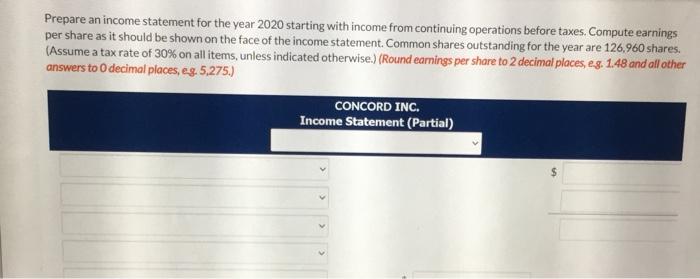Answered step by step
Verified Expert Solution
Question
1 Approved Answer
1. 2. Concord Inc. reported income from continuing operations before taxes during 2020 of $820,000. Additional transactions occurring in 2020 but not considered in the


Step by Step Solution
There are 3 Steps involved in it
Step: 1

Get Instant Access to Expert-Tailored Solutions
See step-by-step solutions with expert insights and AI powered tools for academic success
Step: 2

Step: 3

Ace Your Homework with AI
Get the answers you need in no time with our AI-driven, step-by-step assistance
Get Started


